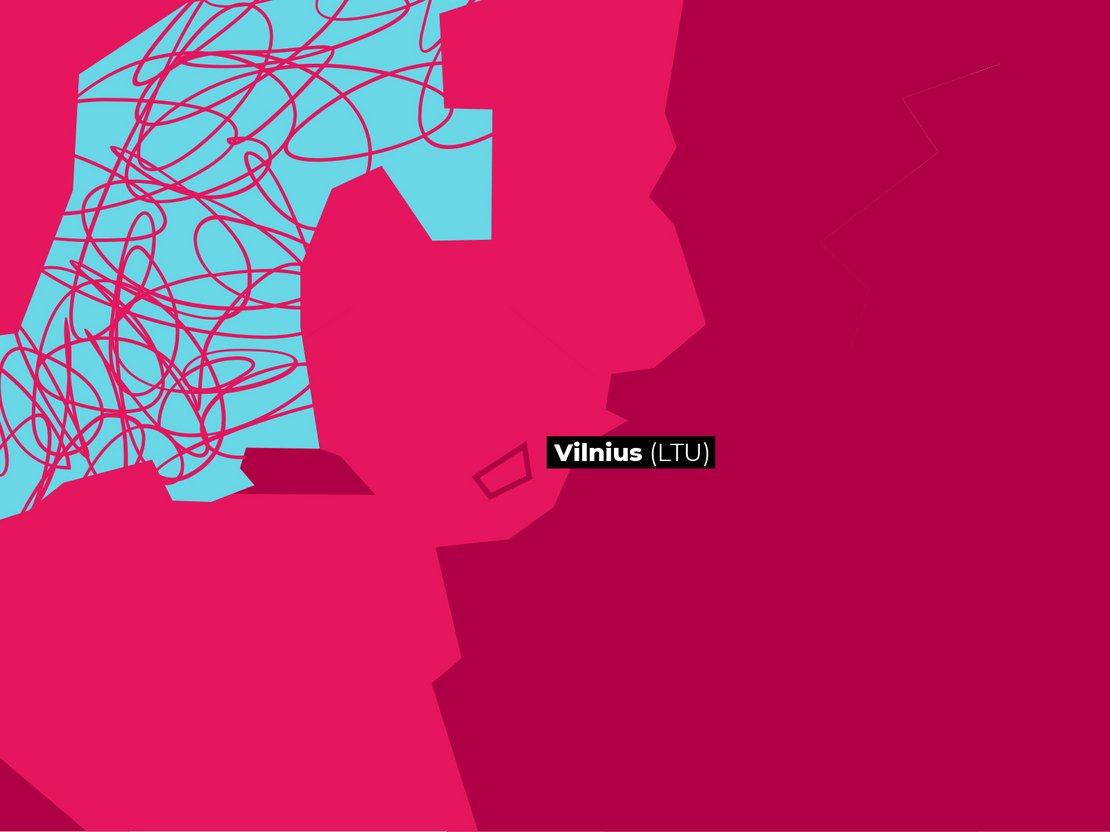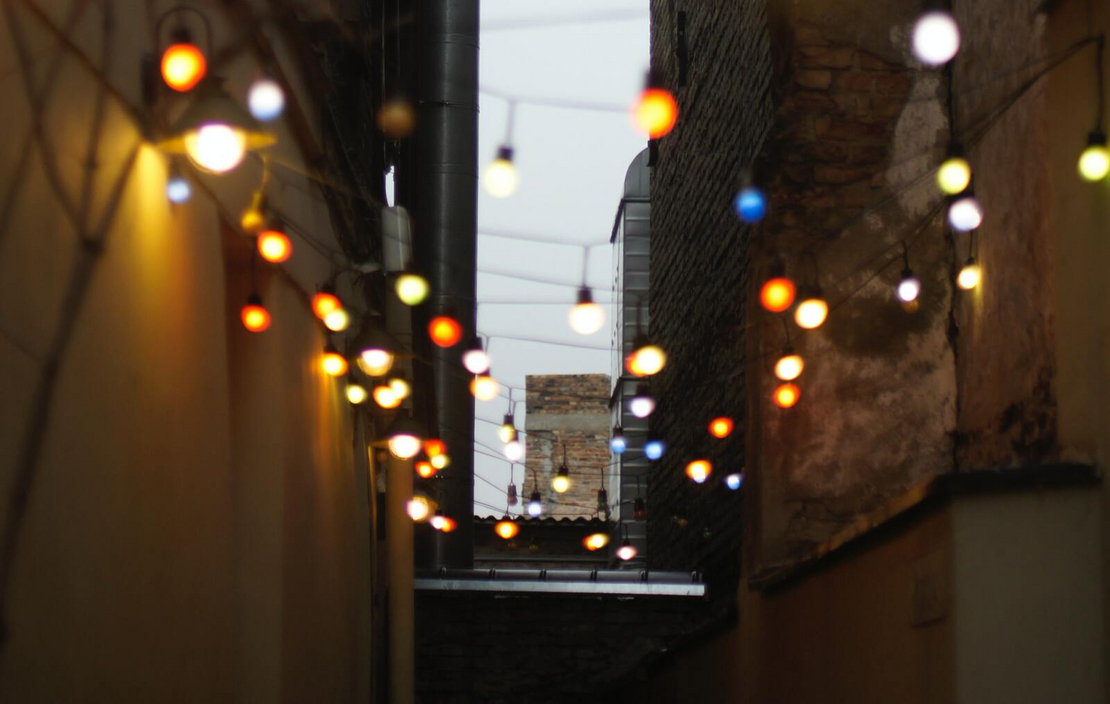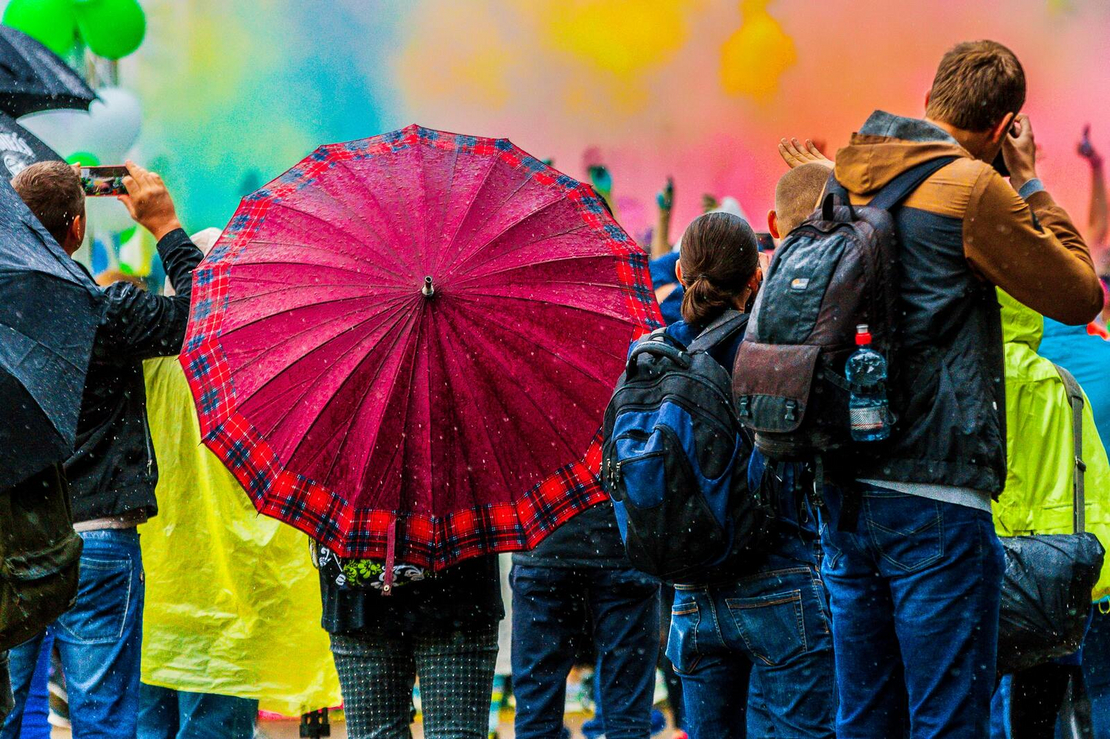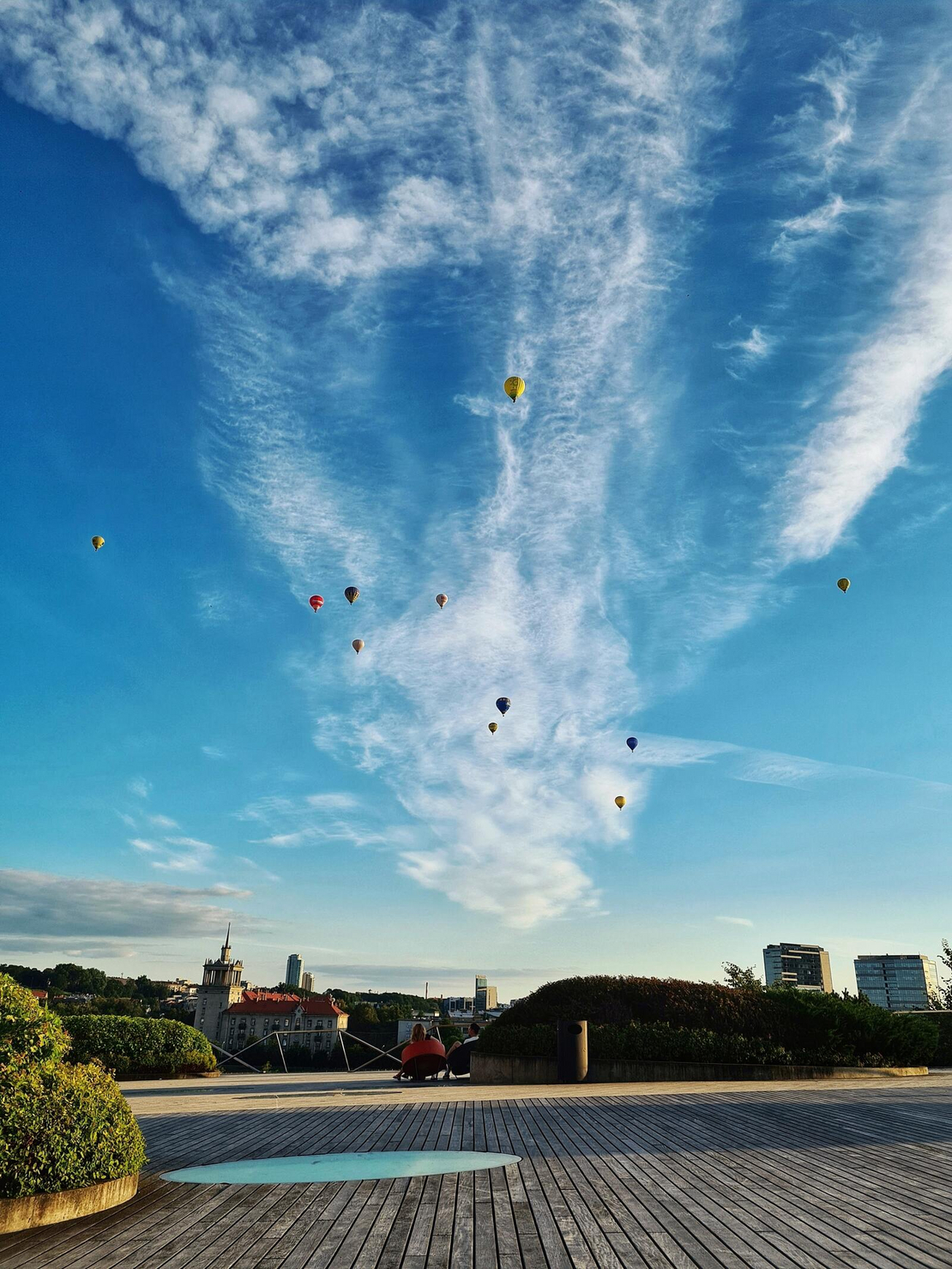Vilnius Region, Lithuania
| NUTS code | LT00A |
|---|---|
| Population | 810.538 (2019) |
| Area in km² | 9.731 km² |
| GDP/inhabitant (year) | 21.300 (2017) |
| GDP growth rate (year) | 4.0% (2019) |
| Unemployment rate (year) | 4.6 % (2018) |
| Cohesion Policy category | Transition regions |
Number of CCI support organisations: 10
Global creativity index – GCI, country level: 0.490 (2015)
Regional Entrepreneurship Development Index – REDI: 32.8 (LT, Lithuania, 2017)
1. Introduction
The capital city Vilnius and its region have the biggest concentration of economic activity in the country. This area contributes 40% to total GDP of Lithuania. In this region majority of people work in service sectors. 70 % of all Lithuanian creative and cultural industries (CCI) are concentrated in and around Vilnius, and the central part of the city itself (the Old Town, Užupis and the new city centre) hosts up to 80 % of all Vilnius CCI. Lithuania's strategic documents use the terms creative industries and cultural industries (cultural economy). Following the UK model, CI are defined as industry underpinned by types of activity-based on the creativity, ability and talent of an individual. Those activities are able to produce material welfare and workplaces, by creating intellectual property.
In 2002, the Cultural Development Programme of the Regions was adopted by the government of Lithuania. This programme was targeted to form the administrative, financial, legal and information basis for the development of regional (counties) culture. However, county administration units were abolished in July 2010 and a new programme for the regions was adopted in 2011. This new programme defined priorities for culture development in the regions, provided preconditions for access and consumption of culture in province municipalities, and underlined the role of regions in cultural tourism and capital investment.
The other type of decentralisation that took place was decentralisation of the "decision making process". In the 1990s, several important cultural institutions were established (Culture and Sport Support Fund; Press, Radio and Television Support Fund) in order to endow independent bodies to take decisions on cultural development and financing of art, culture and media projects. The Culture and Art Council, as well as a number of expert committees at the Ministry of Culture, state cultural institutions and various commissions at self-government level (municipalities) were established and still function as important actors in the cultural sector.
Already in 1990s and 2000s, cultural policy issues became an important topic in governmental programmes. The Governmental Action Plans included state finance, legal, administrative and cultural information measures for the implementation of these programmes. The main institutional cultural activities, programmes and projects are scheduled through the strategic plan of the Ministry of Culture. For example in March 2013, the strategic plan for the years 2013-2015 was passed by a ministerial order. Already in 2012, the government passed the Resolution on the Programme of National Advancement for the years 2014-2020, which included the horizontal priority "Education of society, science and culture". Through this document, culture became an important sector for social life, science, the economy, technology, ecology, etc. issues.
Lithuania managed to include the financing of creative industries into the National strategy for EU Structural Funds for 2007–2013. The controlling rights and obligations to manage the resources went to the Ministry of Economic Affairs, since Structural Fund programmes dealt with entrepreneurship and developments of the environment – topics that traditionally do not belong under the Ministries of Culture. The financing for the Lithuanian art incubator network was intended as part of the implementation of “the Action Programme for Economic Growth”. In 2015 CCI was defined by Ministry of Culture: “Culture and creative industries (CCI) are cross-sectoral economic activities based on creativity and intellectual capital, creating tangible products and intangible intellectual or artistic services with creative, cultural and economic value.”[1]
2. General information about Vilnius region
When focusing on latest developments, policy and activities prioritizations of CCI sector in the Vilnius region and Lithuania, it is necessary to notice that CCI development and policy needs to be seen in the context of wider national sustainable development policy. Lithuanian government policy at the highest level is found in ‘Lithuania’s Progress Strategy - “Lithuania 2030”, a ‘roadmap’ for the country’s future development based on perceived strengths and weaknesses.
National policy related to CCIs has been determined by the Creative Industries Promotion and Development Strategy, intended as a comprehensive policy instrument to advance the contribution of the cultural and creative industries to sustainable development in Lithuania. The strategy was initiated in 2007, formally reviewed in 2009 and then again in 2015. According to a survey conducted by the University of Maastricht, Lithuania is 17th in the European Union for its creativity while its creativity climate is ranked 24th. This may suggest that the right conditions for the development and expression of creativity are not yet properly in place [2].
3. Economy
Economic importance of CCI in the region has increased in the region after 2010 as in many countries in Europe and beyond, CCI has become a prominent element in Lithuania’s national social and economic policy. Culture and creative industries are playing an ever increasing role in the Lithuanian economy with the CCS/CCI sector creating 5.2 % of the country’s GDP and approximately 5% of total export products and services according to data from 2014. National policy related to CCIs has been determined by the Creative Industries Promotion and Development Strategy, intended as a comprehensive policy instrument to advance the contribution of the cultural and creative industries to sustainable development in Lithuania.
The four priorities of the strategy are:
- to develop creative skills in all age groups in society
- to use CCIs’ potential to develop a creative, high-quality life environment
- to raise the economic value and export share of CCIs
- to foster innovations in all CCI sectors [2]
International links
International links are in the case of Vilnius very much related to the location and famous history, for example Užupis Art Incubator constantly hosts foreign artists from all over the world. This Art Incubator was the first in the Baltic States and originally started as an independent artists’ space before receiving funding from Vilnius municipality to become an incubator. Now it offers premises to SMEs and individual creators for long-term residences of 1-2 years and short-term residences up to 12 months.
Another project that has been funded by EEA countries is Actualisation and Presentation of Jewish Cultural Heritage through a Mobile Application. This particular project was a Lithuanian-Norwegian collaboration. The app works on the basis of the user's location with historical research and AR (augmented reality) technology combined to showcase important Jewish heritage in seven Lithuanian cities and towns.[2]
Vilnius Film Office has provided excellent services for many international film productions, including HBO’s Chernobyl and Catherine the Great, Netflix’s Young Wallander and Tokyo Trial, BBC’s War and Peace and many more. The office aims to promote the city through well done movies and working closely with city’s development agency Go Vilnius regarding film tourism. Nice panorama views, Soviet style neighbourhoods (1950-1980), castles, manors and the old town are popular plots for movie makers, just to name few.[3]
4. Regional business eco-system
In June 2010, a report on the government's strategy on promoting Danish arts and culture internationally was launched. Since then the municipalities have been given the full political, administrative and financial responsibility to handle cultural institutions and activities with a local affiliations. Under the Ministry of Culture, many institutions operate to support and promote the industry – internally and abroad. As the Danish Design Centre works to promote the international branding of craft and design and help Danish professionals gain a foothold in the international market. The DFI (Danish Film Institute) provides funding and promotion for film art, film culture and cinema culture, as well as festivals, game production, and television production.
CCI Support Organizations in Lithuania
| CCI Support Organization | Types of Support | Important CCI projects, programs, partnerships |
|---|---|---|
| VERSLI LIETUVA/Enterprise Lithuania | For all business sectors: Non-profit agency under Ministry of Economy and Innovation established to promote entrepreneurship, support business development and foster export | CONVENE - B2B meetings and events as industry marketplace for the countries of the Baltic Sea Region |
| Startup Lithuania | Startup Lithuania is powered by Enterprise Lithuania – one stop shop for current and future startups in Lithuania:
| Impact FinTech 2019: networking, startup zone, roundtables, contacts. Free for community. |
| MITA/Agency for Science, Innovation and Technology | MITA is the main governmental institution, responsible for implementation of innovation policy in Lithuania. It is a national innovation agency. MITA provides free of charge services for clients from business, science and public sectors, interested in possibilities to develop strong cooperation relations with international partners and get financial support for research and innovation projects. | Clusters in Lithuania. |
| Lietuvos kultūros taryba/The Lithuanian Council for Culture | Culture and creative industries. LCC administers the Culture Support Fund:
provides proposals and expert conclusions on culture and arts issues; maintains contacts and cooperation with respective institutions of foreign countries. | Awarding grants in visual arts, music, interdiciplinary arts, literature, theatre, design, cultural heritage etc. |
| Lietuvos kino centras/The Lithuanian Film Centre | Support for Audiovisual sector. Seeking to encourage the development of Lithuanian film sector, Lithuanian Film Centre provides funding for film development and production of the national films. Debut films and minority co-productions are also eligible for support. The centre administrates Lithuanian film tax incentive, which is available for the production of feature films, TV dramas, documentaries and animated films. It includes domestically produced, co-produced or commissioned films. Creative Europe Desk Lithuania MEDIA Office is under Department of Film Production, LFC. | Film industry contacts |
| Vilniaus kino biuras/Vilnius Film Office | Vilnius city has established its Film Office to assist filmmakers in providing all the information on filming in Lithuanian Capital. The Office operates by providing assistance to moviemakers who consider Vilnius as a potential location to shoot their next blockbuster Vilnius Film Office activities include free location permits, free shooting in public places, location scouting, location database, providing contact details of film and media professionals, service companies, production facilities and equipment. | International projects with well known directors and companies. To point out few: HBO, Sky Atlantic, Sister Pictures, Netflix, BBC, National Geographic, ABC, etc. |
| Vilniaus miesto savivaldybė/Vilnius City Municipality | Annual funding programmes for culture and creative industries. | Public art sponsorship programme “Create Vilnius”; Visual and performing arts, music, film, literature, publishing, creative industries, museums support programme; makerspace workshops support programme. |
| Užupio meno inkubatorius/Užupis Art Incubator | Incubation, rent of workspaces and equipment, space for exhibitions, consultancy. | Residential Program for Lithuanian and foreign artists and creatives. |
| Nacionalinė kūrybinių ir kultūrinių industrijų asociacija/National Association of Creative and Cultural Industries | Networking, consultancy, expertise. | Creative Business Cup (national competition in Lithuania), Festival Forum, etc. |
| Spaudos, radijo ir televizijos rėmimo fondas/Press, Radio and Television Support Fund | Press, radio, television, internet dissemination projects. | The State partially finances the projects of producers of public information in the fields of culture, security of provision of information to the public and media literacy education as well as educational projects through the public institution, the Press, Radio and Television Support Foundation |
5. CCI in the region - Overview of the role of CCI sector in regional business
Key indicators gathered via Statistics Lithuania which largely describe CCI in Lithuania show that 6,149 companies with a total of 61,297 employees operated in this sector already in 2007. This accounted for 8 per cent of the total number of companies operating in Lithuania and 4 per cent of the total number of employed people in Lithuania [4]. For 2016 the same number had dropped to 44,920. The world economic and financial crisis (2009-2011) can be seen as one of the factors for this change.
6. Knowledge base and skills
There are different educational programmes in various universities of Lithuania, they cover such spheres as: heritage, architecture, arts, design, and other sectors. Main universities are located in Vilnius with the branches in other cities – Vilnius Academy of Arts, Vilnius University, Vilnius Gediminas Technical University, Lithuanian Academy of Music and Theatre, Vilniaus kolegija / University of Applied Sciences, Vilnius College of Design.
7. Regional CCI development outlook
Needs and gaps are visible when observing the development of Lithuanian regions. Stimulating of this development becomes a major challenge for regional and central authorities. An important to see the case of Vilnius region as facilitating sustainable development in other Lithuanian regions in order to reduce their economic, cultural, social, territorial disparities. It is necessary to emphasize that in a long term, sustainability of regional CCI development strategy could be ensured only by active participation of local communities, but in many cases these communities lack skills and the ability to identify local CCI assets, to develop and implement regional CCI strategy [5]. In this respect neo-endogenous approach could be vital to ensure sustainability and efficiency of regional CCI development strategy. This approach bases on 'bottom-up' activities that integrate external influences to increase local knowledge, local resources and empowering local people to be central to development processes [6].
Development perspectives have to consider despite that several challenges remain, Lithuania has very successfully transformed itself in 28 years since independence. It is developing into a country which is following what is becoming a recognisable Scandinavian-Baltic model and integrating fully both with its two fellow Baltic states and the five Scandinavian 'elder sisters'. The challenges still remaining have been very frankly identified in the country's main strategy document and 'road map', 'The National Progress Strategy - “Lithuania 2030”' which appeared in 2012 and is supplemented by 'The National Progress Programme 2014-2020'.
References
- Ministry of Culture of Republic of Lithuania, (2015). Retreived from: https://lrkm.lrv.lt/lt/veiklos-sritys/kulturos-ir-kurybines-industrijos
- Nordic Dimension Partnership on Culture (2017). Mapping exercise: how could creative industries foster innovation in tourism in the northern dimension area? Retrieved from: https://www.ndpculture.org/studies/mapping-exercise-how-could-creative-industries-foster-innovation-in-tourism-in-the-northern-dimension-area
- Vilnius Film Office. Retreived from: https://filmvilnius.com/filmography/
- Creative Industries in Estonia, Latvia and Lithuania. (2011). Retrieved from: https://www.looveesti.ee/attachments/141_Creative_Industries_2011.pdf
- Clifton, N., Comunian, R., & Chapain, C. (2015). Creative Regions in Europe: Challenges and Opportunities for Policy. European Planning Studies, 23(12), 2331-2335.
- Černevičiūtė, J., Strazdas, R., Kregždaitė, R., & Tvaronavičienė, M. (2019). Cultural and creative industries for sustainable postindustrial regional development: The case of Lithuania. Journal of International Studies, 12(2), 285-298.






